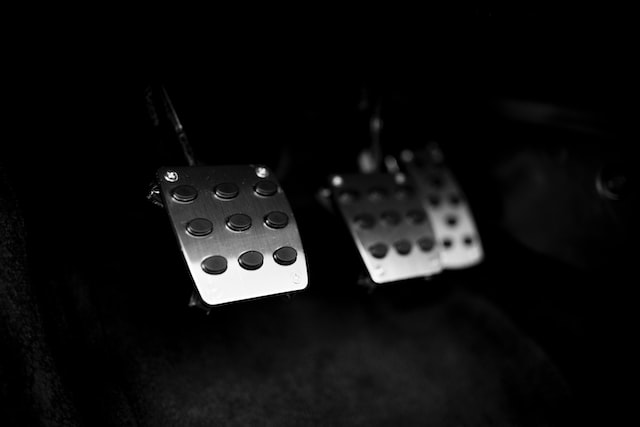
Cargroot is reader-supported. When you buy through links on our site, we may earn an affiliate commission.
Are you seeing a Depress Brake Pedal light flashing on your dashboard? This guide will explain everything you need to know regarding this warning sign and how to fix it safely.
The message Depress Brake pedal means that the driver needs to apply more pressure on the brakes. This warning can have several reasons, such as worn-out brakes, stiff pedals, or defective brake indicators.
In this article, I will explain why you are getting Depress Brake pedal sign and what you should do to fix it. Let’s get going.
What does Depress Brake Pedal Mean?
Modern vehicles use two types of braking systems – Manual and Power brakes. in both systems, fluid pressure is used to stop the car. In manual ones, you need to apply pressure on the brakes that transfer fluids to the brakes. In the power braking system, the same is achieved by an electromechanical device.
Depress Brake Pedal refers to applying pressure on the brake pedal all the way down to stop the vehicle. Usually, the more pressure you apply, the harder the brake pads will go against the drum surface and stop the car. But due to some mechanical failures, sometimes the brakes get stiff, and regardless of the pressure you apply, you will be getting Depress Brake Pdael warning.
When Do You Get Depressed Brake Pedal Message?
There are two scenarios when you may need to depress the brake paddles. Let’s have a look:
Depress Brake to Stop the Car
If you have a manual transmission in your car, Depress Brake pedal warning may appear due to the less pressure on the brake pedal. When you apply brakes and try to stop the car, sometimes, it doesn’t work due to a mechanical failure.
So the warning message appears as a safety precaution indicating that you must push all the way to slow down or stop the vehicle completely. Occasionally, the braking system gets too stiff due to a bad brake booster, or worn-out brake pads, which reduces the amount of fluid going into the brakes, making it harder to stop the car.
Depress Brake to Start the Engine
In cars with automatic transmissions, you get the Depress Brake Madel message when you need to crank up your engine. Automatic cars can’t start if the brakes are not pressed for apparent reasons.
Here are some other possible reasons behind Depress Brake pedal lights:
- There is a problem in the brake circuit that notifies the car’s ECU about brakes.
- There is a broken brake light switch under the brake pedal. It can also trigger a warning message.
- If there is a technical fault in the wiring between the display unit and the brake switch, the Depress Brake pedal message may flash.
- Sometimes a faulty display unit may flash a random warning sign. However, the chances of it happening are low.
- If the brake booster in your car fails, it doesn’t transfer the pressure from the pedal to the brake pads. No matter how hard you press the brakes, the vehicle will take a long time to stop. That’s why you get a Depress Brake pedal message, meaning you need to hit the brakes as hard as possible to stop the car.
- A leak in the vacuum hose may also disturb brake boosters and require you to press the brakes harder to stop the car.
How to Depress the Brake Pedal
The idea behind depressing the brake pedal is not complicated to understand. If you don’t depress the brake after the warning sign, the car won’t stop or will take a long time to stop. You may also lose control of the vehicle.
Ignoring the Depress Brake Pedal may also damage the braking system and, eventually, your vehicle’s engine. Let’s see what you can do:
- If you have an automatic transmission, press the brake pedal hard and then push the ignition button. If the car doesn’t start, apply more pressure on the brakes and try again.
- If the message appears on the screen while you are driving, stay calm and start applying brakes slowly and try to stay in your lane. Don’t make sudden direction changes, as you have slightly less control over your car. Keep hitting the brakes until the vehicle slows down and eventually stops.


![[Solved] Check Emission System Acura MDX](https://cargroot.com/wp-content/uploads/2023/05/jakob-rosen-GtBQKUkrrwM-unsplash-e1684476012826-100x70.jpg)

![[Solved] Oil Light Comes on and Off – Meaning, Causes & Fixes!](https://cargroot.com/wp-content/uploads/2023/03/alex-mccarthy-BKM4T2BLlFE-unsplash-100x70.jpg)


My car can’t start it say depressed brakes